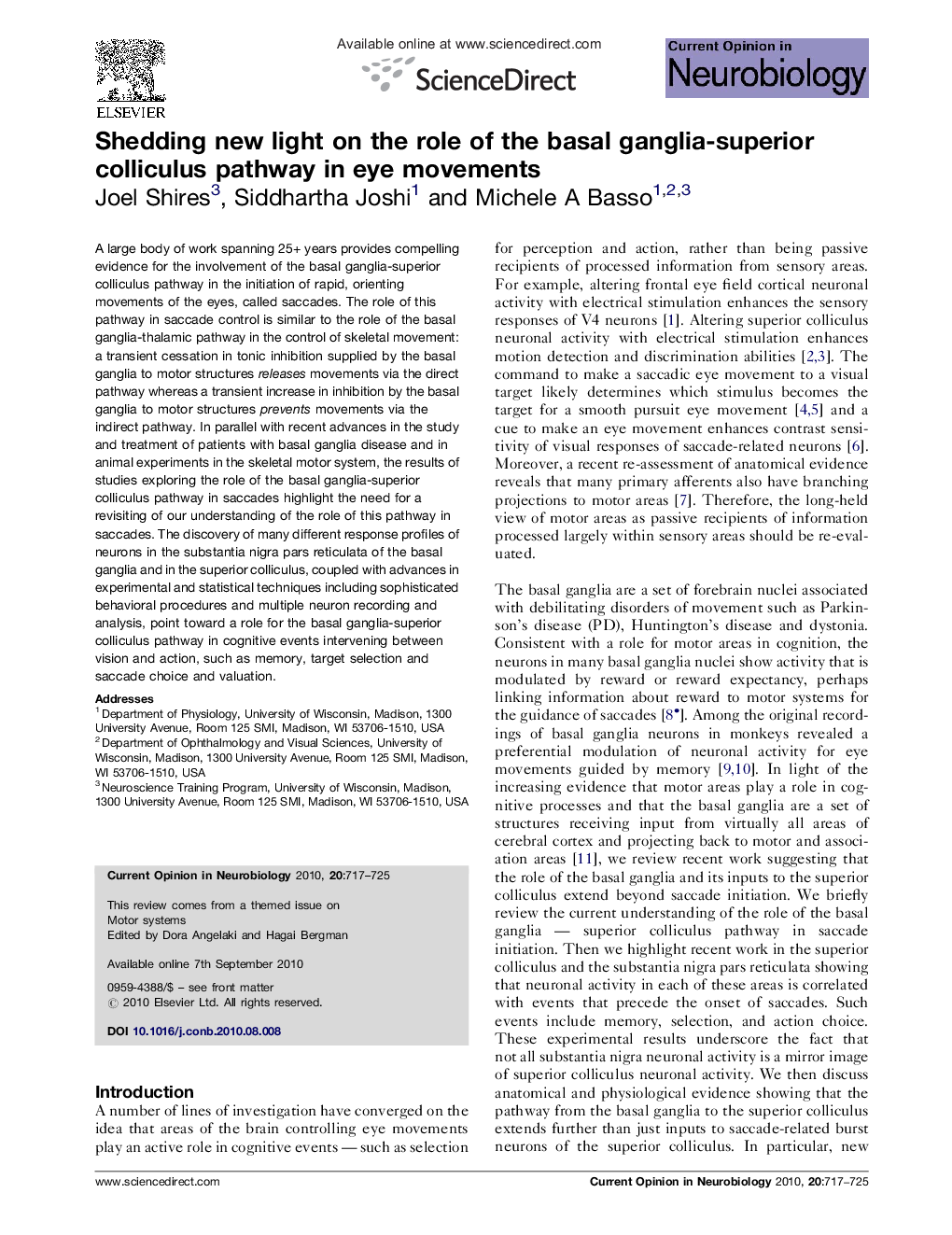| Article ID | Journal | Published Year | Pages | File Type |
|---|---|---|---|---|
| 4334575 | Current Opinion in Neurobiology | 2010 | 9 Pages |
A large body of work spanning 25+ years provides compelling evidence for the involvement of the basal ganglia-superior colliculus pathway in the initiation of rapid, orienting movements of the eyes, called saccades. The role of this pathway in saccade control is similar to the role of the basal ganglia-thalamic pathway in the control of skeletal movement: a transient cessation in tonic inhibition supplied by the basal ganglia to motor structures releases movements via the direct pathway whereas a transient increase in inhibition by the basal ganglia to motor structures prevents movements via the indirect pathway. In parallel with recent advances in the study and treatment of patients with basal ganglia disease and in animal experiments in the skeletal motor system, the results of studies exploring the role of the basal ganglia-superior colliculus pathway in saccades highlight the need for a revisiting of our understanding of the role of this pathway in saccades. The discovery of many different response profiles of neurons in the substantia nigra pars reticulata of the basal ganglia and in the superior colliculus, coupled with advances in experimental and statistical techniques including sophisticated behavioral procedures and multiple neuron recording and analysis, point toward a role for the basal ganglia-superior colliculus pathway in cognitive events intervening between vision and action, such as memory, target selection and saccade choice and valuation.
